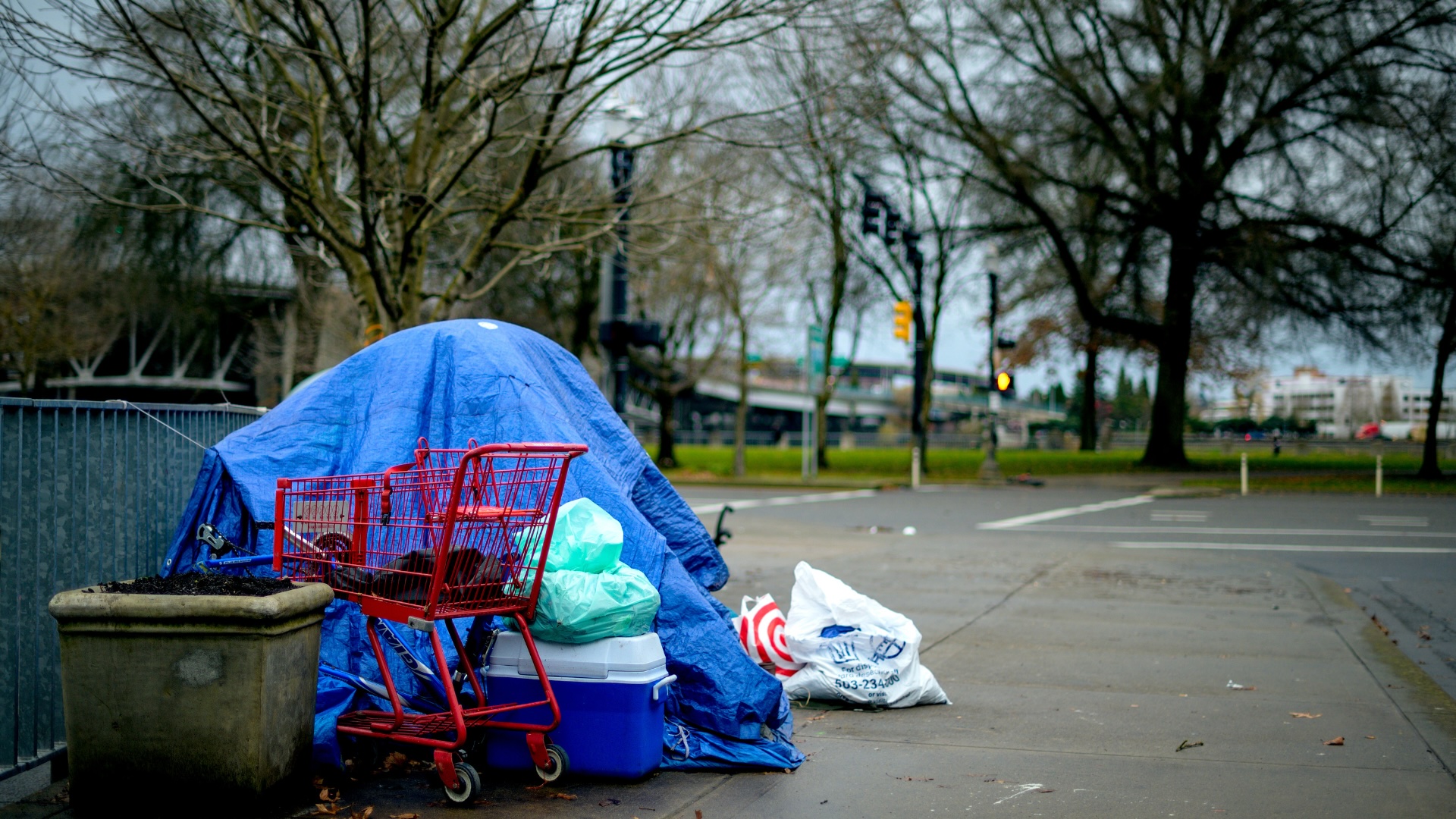
Editor’s note: The following is a lightly-edited transcription of an interview with the director of the Doctors’ Volunteer Clinic in St. George.
Libertas Institute: Please tell us who you are and what you do.
DeAnne Staheli: My name is DeAnne Staheli and I’m the director of the Doctors’ Volunteer Clinic of St. George.
LI: How did your clinic get started?
DS: In 1999, Dr. Doxey was president of the local medical society and they were trying to think of something they could do to give back to the community. They decided to start a free clinic, which took about a year of preparation work, meeting with agencies in the area.
The local homeless shelter volunteered their site, which was a tiny house with five rooms. They gave us one room, the size of a bedroom. We turned the closet into a medication closet, put a sink and shelves in. Somebody donated $3,000 to start, and that was our budget for the first year.
In only three months, we were overwhelming them and needed to find somewhere else to operate. We only had two doctors volunteering, and nobody to help with mental health or dental. We found volunteer counselors from the community to help start our mental clinic, and found dentists that were willing to take patients in their offices.
That was for the first couple years. We put an ad in the paper to see if anybody wanted to donate land or a building so we could move, and found somebody who donated land to us. The local homebuilders association volunteered to build it, and we were able to pay them about $80,000 for all of that work. That was in 2003, and the building was about 3,000 square feet. It had three exam rooms, one counseling room, and one dental chair.
That was okay until about 2010, when we were having mental health done in the dental chair, or doing counseling in the storage closet… we were bursting by the seams by then. So we planned a new building, which the home builders agreed to do again. The economy had crashed and this is a construction community, so they were the hardest hit. These people, a lot of them didn’t have any work. But they were over here volunteering.
These guys added another 3,000 square feet and remodeled the interior of the existing building, and now we have exam rooms, a pharmacy, surgical, dental, medical health, office space… it was going to cost $250,000 and they charged us a final bill of $50,000. It was amazing!
LI: How many patients has your clinic cared for?
DS: The reason we started the building is because we were seeing 1,000 patients a month, and that’s remained consistent since 2010. The first year we started, there were about 3,000 people during the entire year.
I used to only have 2-3 physicians, now we have 14 who are all either retired or semi-retired. There are at least 2-3 here each day, and even now our seven exam rooms are always full.
LI: What type of people come to your clinic?
DS: These folks have no insurance and live 150% below the poverty line. These are the ones who are in the gap. They make a little too much to qualify for Medicaid, or they’re unemployed, or trying to get insurance. Most of our patients are with us for about a year. Then on the second year, it drops to half. They get situated after that time, but we’re here for them during that first year until they get to a better financial situation.
LI: Why aren’t there more free clinics like yours here in Utah?
DS: Last week I went to a conference for all the free clinics in the Western region. There are 37 clinics as part of that region. There are around 25 in California alone. In Utah, we’ve got one in Park City, a couple in Salt Lake City, and then us. We’re probably one of the largest ones, and we’ve been here longer than the others. Perhaps bigger cities are more likely to have them.
Ours is the perfect model for Republicans and others who oppose government medical care. Our model is “community solutions to national problems.” Here’s a way we can still be responsible for those in our community who are uninsured. We do it without relying on the government to do it.
I don’t understand why people don’t support clinics like ours more. We see 1,000 people a month on a fraction of a budget that other clinics have. The federally funded health centers? I see more uninsured people than they do, at least the one here in St. George, for much, much smaller of a budget. My budget is $250,000 yearly, which is about $20 per patient that we see.
If everybody in the community gave me $10 a month, for example, we could cover everything. There would be no need for anything else.
LI: Do you think that it’s at all hypocritical for people to say that the government shouldn’t be involved in health care when they aren’t themselves doing anything about it, such as donating to private clinics?
DS: I don’t think I would call them hypocritical.. maybe just not willing to fulfill their responsibility. There are a lot of people in our community who donate to our clinic. Those are the ones who are understanding and recognize their ability to help out. People who don’t see what we’re doing, or don’t feel a connection, would just rather let the government be the ones to step in.
The government’s plans don’t cover everybody, so it’s important to support the free clinics where your money goes toward medical care rather than administrative costs. Free clinics offer the ability to use volunteers so that donated resources are used much better to help those in need.
LI: Representative Mike Kennedy is a doctor, and during this past legislative session he advocated against a bill that dealt with government’s involvement in health care. He suggested that the LDS Church could organize medical volunteers to provide care to the needy. Many churches were involved in medical care in the past, more so than today. Do you think that churches should play a greater role in trying to provide medical care to the needy?
DS: I think so. A lot of free clinics are faith-based. It’s amazing the money they can fund their clinic with because of that connection. I have tried all sorts of things to get something like that set up, talking to churches to get grants or support.
We live in a retirement community, so we’re able to more easily get the retired doctors who will donate their time after retirement to help the poor. But what do you do in places where you don’t have a lot of retired doctors? Having doctors or other medical professionals called by their church to help out a few hours a week, or for a full year, would be great.
Plus, other faith-based free clinics have a lot of member support. They donate, they volunteer, they help make it a success. I don’t know why it’s not one of the top priorities for churches, including the LDS Church — taking care of the uninsured. I know they do some, but it seems it’s more in other countries.
I do agree that it would be a good idea to solicit more support from churches.
LI: In a recent article we published about your clinic, the author interviewed Dr. Doxey, your board’s chair, and he listed some of the clinic’s benefits. Would you expound on some of them? The first item he suggested is that it’s “medicine as it should be practiced.” What does he mean by that?
DS: The doctors that I have had in this clinic often say that “this is what it used to be like to practice medicine.” They get to just come and help people without the controls and rules about what tests must be run in order to get paid. Because they don’t have to get paid, they get to just do whatever tests they think are actually necessary to help the patient.
LI: Another thing Dr. Doxey mentioned is that patients are universally appreciative. How have you seen that in our daily work with the clinic?
DS: The other day a guy came in whose eyes were inflamed and burning. He had just lost his pesticide business and when training somebody he accidentally ended up with a chemical in his eyes. His eyes were huge and swollen. A friend drove him over here because he didn’t want to go to the emergency room (a common story, because of how much it would cost them). We were able to numb and rinse his eyes and help him get back to normal. He was in tears afterward because he was so thankful, so appreciative.
We have specialists around town who will do one free consult for patients we refer to them. So we sent this guy over to an eye specialist who took care of him. The patient later came back with his family and brought us chocolates, he was just so thankful for our help.
Another guy drove over to our clinic with a gun in his car. It was his last stop. We were his last hope. He didn’t want to go to the ER because he didn’t want to put the debt on his family. He was ready to kill himself. He talked to somebody here, and over the next week he came every day. After a week he was smiling and continued to improve over the next few weeks. He began volunteering at the clinic and was so grateful. So many people who come here are in despair and can’t see how things might get better. He volunteers regularly now.
That’s a common thing, to want to give back. One guy had a blood pressure problem and would come to get help pretty regularly. He would always say that “one of these days I’ll pay you back.” So one day he walks in, and he looked the same, I thought he was going to get some more treatment. He was there to bring us a check for $1,200. Our patients are very thankful, and most leave a donation or want to help.
LI: Dr. Doxey also mentioned that there is a “good feeling” at the clinic. Have you seen that, and to what do you attribute it?
DS: I’ve heard new volunteers comment a lot on the feeling of respect that they believe we offer people at the clinic. When a patient walks in the door, we know they’re here for a reason. Maybe they just need to be smiled at or talked to in a kind way. We don’t turn them away without figuring out some way to help them.
I’m also a provider, and sometimes it’ll be the end of the day, I’m just trying to get to one more patient, and not really paying much attention, and the patient will start crying. Perhaps they are happy to have somebody to talk to them, or help them, or that they didn’t have anywhere else to go. It’s in cases like that where I’m glad we didn’t blow the person off, because we just never know what each person might need.
The volunteers and the doctors, we all have so much fun together.
LI: What does your clinic most need to continue its success?
DS: The best help is financial, because I can’t run the clinic without funding. The most important thing for us is to help people recognize that even a small donation goes a really long way. With $20 being able to cover a patient’s visit and needs, that’s huge. Anybody can help.
Editor’s note: if you would like to donate to the Doctors’ Volunteer Clinic, click here.




